The Foundation of Healthy Relationships
Effective communication forms the cornerstone of any lasting personal relationship. Whether between partners, family members, or close friends, the ability to express thoughts and feelings clearly while also understanding the other person leads to stronger bonds, reduces conflicts, and promotes emotional intimacy. This article explores practical strategies, techniques, and tools designed to improve communication skills within personal relationships, helping you foster empathy, resolve misunderstandings, and deepen connections.
Key Strategies and Techniques for Improving Communication
What are general strategies and techniques for improving communication in personal relationships?
Enhancing communication within personal relationships requires deliberate practice of several effective techniques. Central to this is active listening, which involves giving full attention to your partner, reflecting feelings, and asking open questions. This not only fosters understanding but also validates your partner’s experience.
Using 'I' statements is another vital approach. Instead of blaming with phrases like "You never listen," expressing feelings as "I feel unheard when..." lowers defenses and promotes empathy. This creates a safe space for honest dialogue.
Body language and tone of voice are equally important. Non-verbal cues such as facial expressions, gestures, eye contact, and the pitch or volume of speech convey emotions and intentions beyond words. Paying attention to these signals enhances emotional understanding and prevents misinterpretations.
Clarifying intentions and expectations helps prevent conflicts rooted in assumptions. For example, discussing what each partner expects from a conversation or action ensures mutual understanding.
Establishing regular check-ins and ongoing conversations sustains connection and trust over time. These can be simple daily or weekly talks where partners share feelings, accomplishments, and concerns.
By combining active listening, clear expression via 'I' statements, attentive use of body language, and routine communication practices, couples can build a more understanding, supportive, and resilient relationship.
Practical Communication Tools and Exercises for Couples
Effective communication in relationships hinges on practical tools and structured exercises that foster understanding, empathy, and emotional connection. One foundational approach involves validation exercises, where partners actively acknowledge each other's feelings without necessarily agreeing, creating a safe environment for expressing emotions.
Active listening exercises are vital; they require full attention to the speaker, avoiding interruptions, and paraphrasing what the other person has said. Techniques such as the Three and Three exercise—where each partner shares thoughts for three minutes, then listens to the other's three-minute reflection—encourage focused listening and mutual respect.
Using 'I' statements, like 'I feel...' instead of accusatory language, reduces defensiveness and promotes honest dialogue. Couples can also practice mirroring each other's words through techniques like the Rapoport method, where one partner paraphrases what they've heard, and the other confirms accuracy. This fosters clarity and deepens understanding.
Non-verbal exercises, such as extended eye contact, strengthen emotional bonds, allowing partners to connect without words. Regular relationship check-ins—dedicated times to discuss feelings, needs, and issues—maintain ongoing communication and preempt misunderstandings.
Incorporating gratitude and appreciation exercises shifts focus to positive interactions. Simple practices like sharing daily blessings or positive experiences reinforce trust and intimacy.
For a structured and effective framework, many couples benefit from therapy approaches like the Gottman Method, Internal Family Systems (IFS), Emotionally Focused Therapy (EFT), or Imago therapy. These approaches offer unique tools and exercises that target underlying patterns, improve emotional regulation, and build healthy communication habits.
Consistent application of these exercises, ideally guided by professional support when needed, can markedly improve relationship dynamics. By integrating both verbal and non-verbal techniques, couples can develop a more resilient and fulfilling partnership.
Foundations of Verbal, Non-verbal, and Written Communication in Relationships
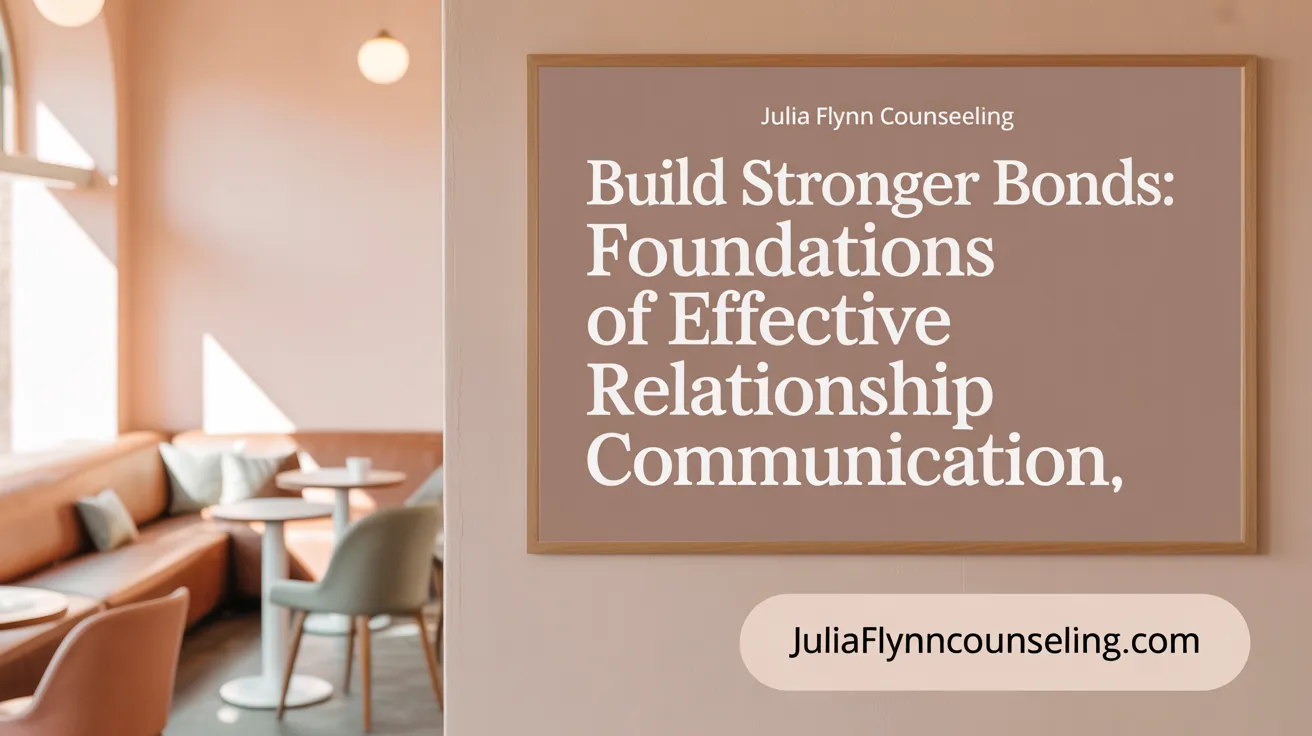 Effective communication in relationships hinges on several interconnected components that foster understanding, trust, and emotional connection.
Effective communication in relationships hinges on several interconnected components that foster understanding, trust, and emotional connection.
First, clear verbal expression is fundamental. Using simple, respectful language—particularly "I" statements—helps partners communicate their feelings and needs without blame or hostility. Being honest and concise ensures that messages are understood and that misunderstandings are minimized. "Active listening" complements verbal expression; giving full attention, paraphrasing, and asking open questions show genuine interest and promote mutual understanding.
Equally important are "non-verbal cues", which can account for up to 93% of communication’s impact. Facial expressions, eye contact, gestures, posture, and tone of voice all reinforce or sometimes contradict spoken words. When non-verbal behaviors align with verbal messages, they convey sincerity and emotional depth, helping to avoid confusion or mistrust.
Written communication plays a crucial role, especially in modern relationships where texts, emails, or shared notes are common. Effective written messages are clear, thoughtful, and free of ambiguity. Using emotional validation techniques such as "I" statements and expressing appreciation can enhance the effectiveness of written exchanges. Visual aids—like diagrams or pictures—can also support understanding, especially when discussing complex topics or coordinating plans.
In addition, "adaptability in communication styles" is vital. Recognizing that each individual may prefer different modes—assertive, passive, or passive-aggressive—allows partners to adjust their approaches for better connection. Managing barriers like misinterpretations, cultural differences, or emotional overload involves patience, empathy, and sometimes external support.
Overall, the integration of these components—verbal clarity, aligned non-verbal cues, thoughtful writing, and style flexibility—creates a robust foundation. When partners consistently practice these elements, their interactions become more positive, conflicts are resolved healthier, and emotional bonds are strengthened.
Recognizing and Overcoming Communication Barriers and Pitfalls
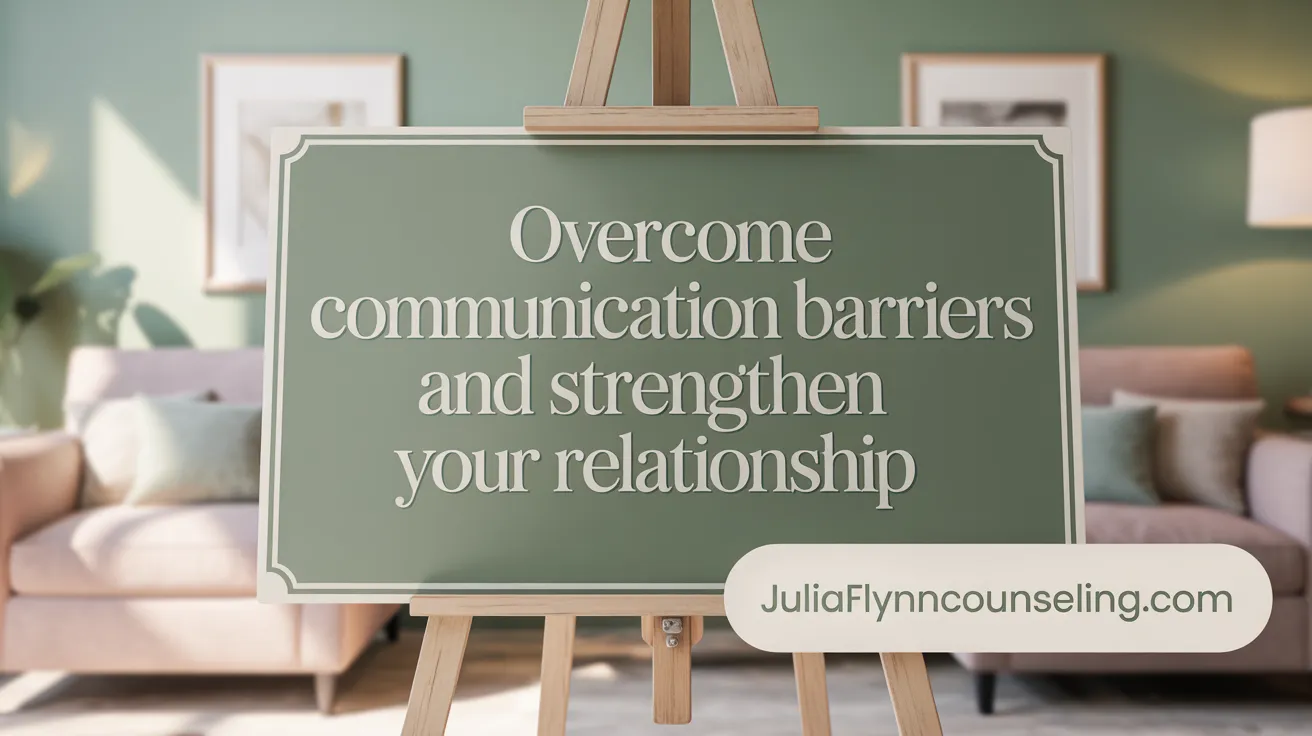 In any relationship, recognizing when communication is breaking down is a crucial first step toward improving connection and understanding. Common signs of communication issues include frequent misunderstandings, defensiveness, withdrawal or stonewalling, and contempt. These signals often indicate that the conversation has become unproductive or emotionally charged, risking further distance.
In any relationship, recognizing when communication is breaking down is a crucial first step toward improving connection and understanding. Common signs of communication issues include frequent misunderstandings, defensiveness, withdrawal or stonewalling, and contempt. These signals often indicate that the conversation has become unproductive or emotionally charged, risking further distance.
Unhealthy communication patterns such as criticism, defensiveness, contempt, and stonewalling can quickly erode trust and intimacy if not addressed. Criticism involves attacking a partner’s character or behaviors, while defensiveness serves to protect oneself rather than seek understanding. Contempt, characterized by sarcasm or disdain, and stonewalling, which is refusal to communicate, are particularly damaging.
To overcome these barriers, it’s vital to employ strategies that foster safety and openness. Gentle startups—approaching difficult discussions with calmness and respect—can help reduce initial tension. Accepting responsibility for one’s part in conflicts encourages cooperation, while sharing feelings openly prevents misunderstandings. Techniques like active listening, where you paraphrase and reflect your partner’s words, help ensure mutual understanding.
Creating a safe space for dialogue involves setting and respecting boundaries, practicing empathy, and avoiding criticism or contempt. This might mean choosing calm moments for serious talks and ensuring both partners feel heard and valued.
In many cases, seeking professional counseling can significantly aid in addressing deeper communication blockages. Couples therapy offers tools and exercises, such as conflict resolution coaching and role-playing, that build better understanding and respect. A trained counselor can help couples unravel complicated emotional triggers and develop healthier interaction patterns.
Consistent effort in practicing respectful dialogue, addressing issues early instead of letting misunderstandings fester, and being open to external support are essential steps in overcoming communication pitfalls. By proactively recognizing harmful patterns and implementing strategies to counteract them, couples can rebuild trust, deepen their emotional connection, and enjoy a more harmonious relationship.
Techniques for Managing Conflict and Increasing Understanding
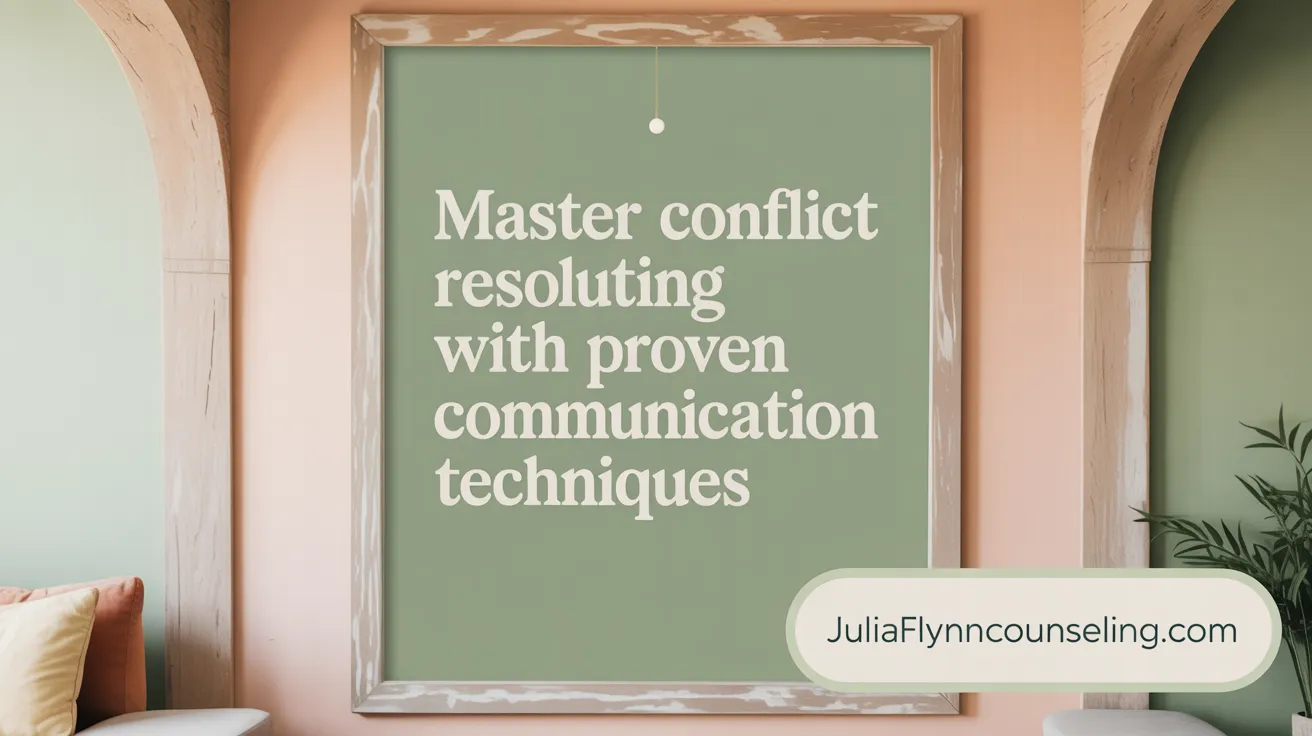 Effective conflict management and promoting understanding in relationships require a combination of thoughtful strategies and ongoing practices.
Effective conflict management and promoting understanding in relationships require a combination of thoughtful strategies and ongoing practices.
One fundamental approach is active listening coupled with reflective empathy. This technique involves giving full attention to your partner, paraphrasing their words, and reflecting their feelings back to them. It helps both parties feel heard and validated, reducing misunderstandings and emotional escalation.
Using 'I' statements during disagreements is another vital method. Instead of blaming, expressing your feelings and needs—such as saying, "I feel hurt when..."—creates a respectful environment that encourages cooperation rather than defensiveness.
Softening start-ups, meaning beginning conversations gently and kindly, can prevent conflicts from escalating. When discussions are triggered by conflict, framing the opening line with calmness and care significantly impacts the tone and outcome.
Collaborative problem-solving involves working together to brainstorm solutions, emphasizing mutual respect and fairness. This approach turns conflicts into opportunities for partnership, fostering trust and emotional safety.
Taking emotional breaks or time-outs during heated moments allows both partners to cool down and regain perspective. This prevents unresolved tensions from causing lasting damage and promotes healthier dialogue.
Establishing routine relationship check-ups is also highly effective. Regularly scheduled discussions about feelings, needs, and concerns help identify issues early before they escalate into larger conflicts. These check-ins reinforce connection, build understanding, and create a shared framework for love and trust.
By integrating these techniques—active listening, respectful communication, gentle initiation, collaborative problem-solving, taking breaks, and regular check-ins—partners can manage conflicts more constructively and deepen their mutual understanding, leading to stronger, more resilient relationships.
Communication Frameworks That Foster Emotional Connection and Empathy
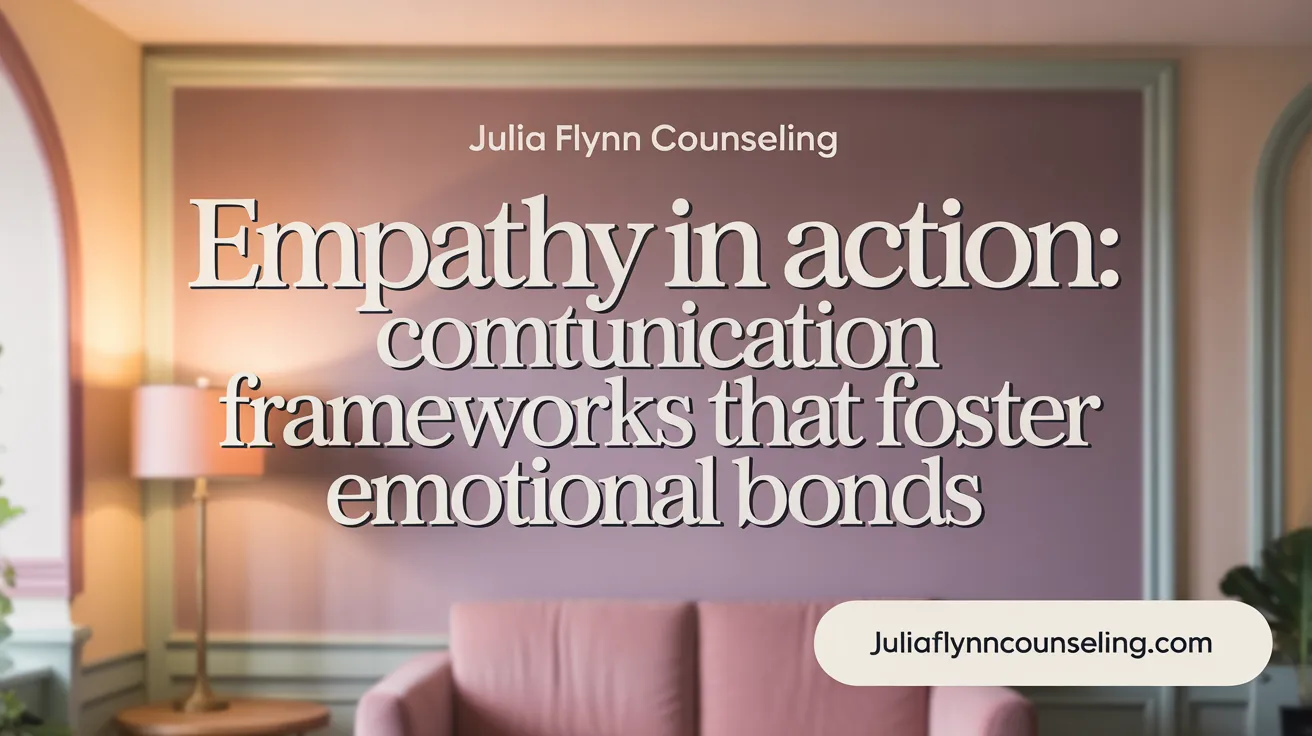 Several communication frameworks are specifically designed to cultivate emotional bonds and empathy within relationships. One prominent approach is Nonviolent Communication (NVC), developed by Marshall Rosenberg. NVC focuses on honest self-expression and empathetic listening by encouraging individuals to share their feelings and needs without judgment or blame. Through techniques like active empathetic listening—where one fully engages with the partner's verbal and nonverbal cues, paraphrases, and validates their emotions—trust and understanding are promoted.
Several communication frameworks are specifically designed to cultivate emotional bonds and empathy within relationships. One prominent approach is Nonviolent Communication (NVC), developed by Marshall Rosenberg. NVC focuses on honest self-expression and empathetic listening by encouraging individuals to share their feelings and needs without judgment or blame. Through techniques like active empathetic listening—where one fully engages with the partner's verbal and nonverbal cues, paraphrases, and validates their emotions—trust and understanding are promoted.
Another influential framework is Emotionally Focused Therapy (EFT), which concentrates on identifying and transforming emotional attachment patterns. EFT helps partners understand their core emotional needs and reorganize their bonds through open, compassionate dialogue, leading to increased intimacy and emotional safety.
Active empathetic listening is a fundamental skill that supports both NVC and EFT. It involves giving undivided attention, observing nonverbal signals such as facial expressions and body language, and reflecting or paraphrasing what the partner shares. This active engagement fosters reassurance, reduces misunderstandings, and deepens emotional connection.
In addition, emotional intelligence (EI) frameworks, like Daniel Goleman’s model, underpin these communication methods by enhancing self-awareness, self-regulation, social awareness, and relationship management. Developing EI helps partners recognize and interpret their own emotions and those of others, creating a more empathetic and responsive interaction style.
Nonverbal communication also significantly contributes to empathy. Genuine body language, eye contact, personal space, and tone of voice all reinforce verbal messages, conveying attentiveness and care. When these elements align with spoken words, they strengthen emotional bonds and foster a sense of safety and understanding.
Together, these frameworks—NVC, EFT, active listening, emotional intelligence, and nonverbal cues—form a comprehensive approach to nurturing emotional connection and empathy. They facilitate open, honest communication grounded in compassion, trust, and mutual understanding, crucial for building deeper, more resilient relationships.
Developing Healthier Communication Habits: Resources and Assessments
Improving how we communicate is essential for healthy relationships and effective interactions in all areas of life. To develop better communication habits, there are numerous resources, assessments, and practical tips available.
Books and online workshops are excellent starting points. For example, titles like "4 Essential Keys to Effective Communication in Life, Love, Anywhere!" and "Communication Skills for Couples" offer practical strategies. Many online platforms also offer workshops focused on specific skills such as active listening, empathy, and conflict resolution.
Assessment tools like the Myers-Briggs Type Indicator (MBTI) and DISC personality tests help individuals understand their communication style and how they interact with others. Knowing whether you tend to be passive, aggressive, passive-aggressive, or assertive enables you to focus on strategies that promote healthier exchanges.
Practicing active listening and empathy plays a vital role. This involves giving full attention during conversations, paraphrasing what others say, and interpreting nonverbal cues such as facial expressions and gestures. Asking open-ended questions can deepen understanding and foster genuine connection.
Setting clear communication goals and developing strategies—for example, aiming to use "I" statements, manage assumptions, and schedule regular feedback sessions—helps build trust over time. Creating a routine for ongoing reflection and self-assessment is equally important.
Regularly practicing these techniques and seeking feedback from trusted friends, partners, or mentors can highlight areas for improvement. Incorporating structured exercises, such as communication role-plays or journaling about conversations, can further reinforce new habits.
By combining these resources, assessments, and practices, individuals can gradually develop more effective, empathetic, and satisfying communication habits—both personally and professionally.
Communication Strategies Specific to Marriages, Romantic Partnerships, and Families
In close relationships like marriages, romantic partnerships, and families, effective communication requires intentional strategies that foster understanding, trust, and emotional connection.
One of the most important approaches is maintaining regular check-ins and proactive conversations. For example, setting aside time each morning or evening to discuss hopes, worries, or daily needs helps partners stay connected and aware of each other's emotional states.
Active listening combined with validation and empathetic expression plays a vital role. When partners truly listen without interruption, reflect feelings, and acknowledge each other's experiences, it creates a safe space for openness. Using "I" statements to express feelings helps prevent defensiveness, while summaries can ensure mutual understanding.
Recognizing and addressing unhealthy communication patterns—such as criticism, stonewalling, or defensiveness—is crucial. Identifying these issues early allows couples and families to intervene and replace them with healthier dialogues.
Furthermore, fostering a loving environment that maintains romance while managing responsibilities fairly strengthens bonds. For example, sharing positive affirmations or small gestures of affection can rekindle intimacy (healthy communication tools).
Sometimes, persistent communication issues may require professional support. Seeking therapy helps uncover underlying dynamics and develop tailored communication skills. Overall, these strategies enhance mutual respect, emotional safety, and resilience in family relationships, helping them thrive amid everyday challenges.
Enhancing Active Listening and Compassionate Communication
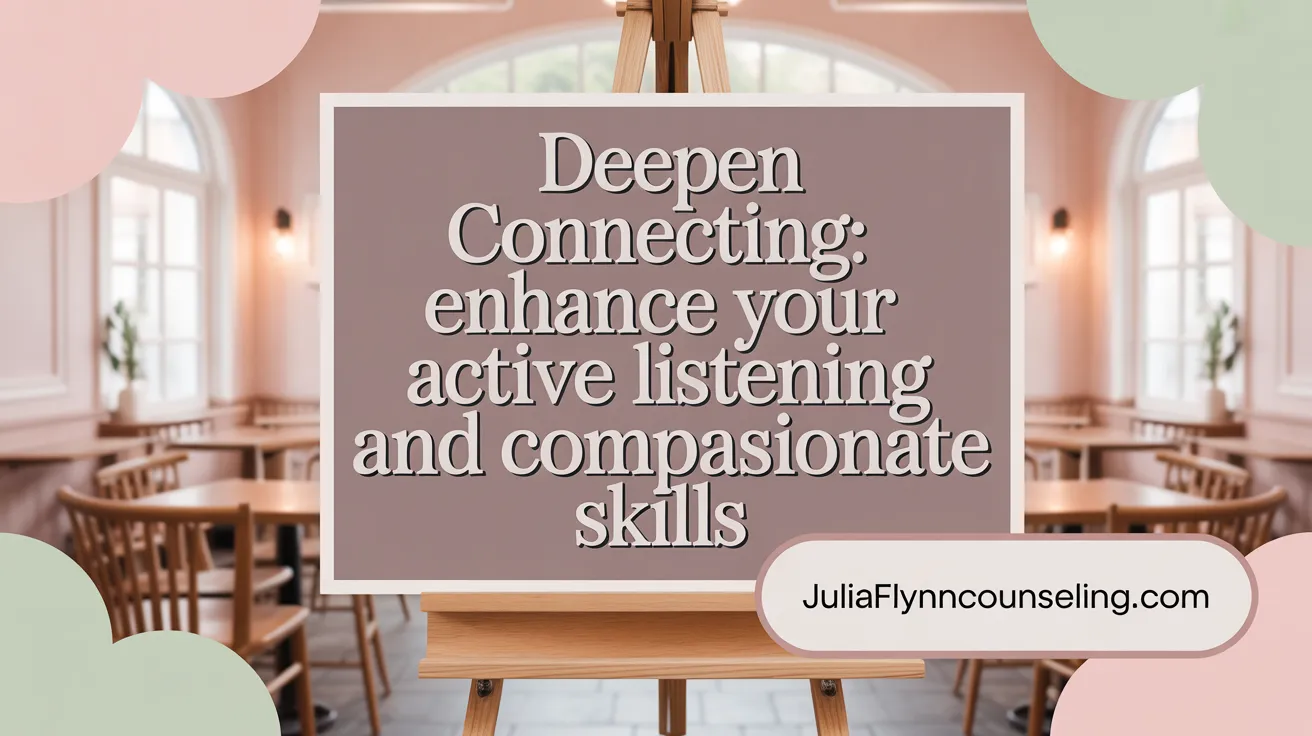
How can active listening and compassionate communication be improved within relationships?
Active listening and compassionate communication are fundamental for strengthening emotional bonds. To enhance these skills, partners should fully engage by maintaining attentive body language, such as making eye contact, nodding, and leaning slightly forward, which signals genuine interest.
Avoiding interruptions is crucial; giving your partner space to speak without rushing to respond shows respect and openness. Reflecting back what you've heard—paraphrasing feelings or summarizing key points—confirms understanding and demonstrates empathy. For example, saying, "It sounds like you're feeling overwhelmed with work" acknowledges their emotions.
Open-ended questions like "How did that make you feel?" or "What do you think we could do about this?" invite deeper sharing and collaboration. Clarification requests ensure clarity and prevent misunderstandings, fostering trust. See more on effective communication in relationships.
Aligning words with non-verbal cues such as facial expressions, tone of voice, and gestures reinforces sincerity and emotional authenticity. Expressing vulnerability—sharing your own feelings honestly—also deepens intimacy, helping your partner feel safe to do the same. Explore compassionate communication techniques for further guidance.
Making regular gratitude a part of conversations and scheduling consistent check-ins can strengthen rapport. This ongoing dialogue nurtures mutual appreciation and allows for addressing issues before they escalate. For methods on check-ins and gratitude, refer to communication exercises for couples.
Ultimately, improving active listening and compassionate dialogue involves consistent practice, patience, and an openness to understanding your partner’s internal world. By doing so, relationships become more resilient, trusting, and deeply connected. For comprehensive strategies on communication in relationships, see effective communication tips.
Building Stronger Bonds Through Thoughtful Communication
Improving communication in personal relationships is an ongoing journey that combines awareness, practice, and the right tools. By adopting proven strategies like active listening, respectful verbal and non-verbal expression, conflict management techniques, and empathy-centered communication frameworks, individuals and couples can deepen their emotional connection and resolve conflicts constructively. Utilizing practical exercises and seeking professional guidance when necessary further strengthens communication skills, fostering healthier, more satisfying relationships. Ultimately, consistent effort and mindful communication nurture trust, understanding, and intimacy—cornerstones of lasting personal relationships.
